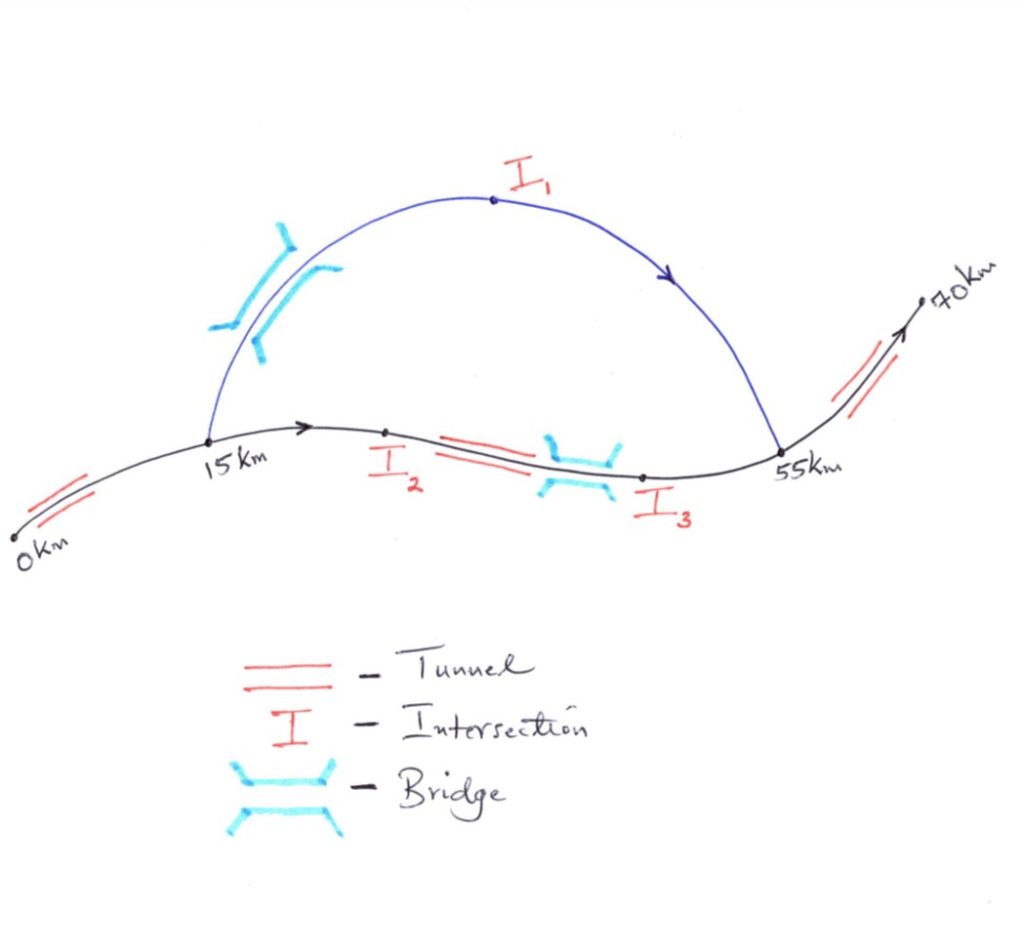The Contractor’s Financial Claim – Part One
In June 2004, I travelled to Europe to visit a friend. Three hours before boarding the aircraft, I bumped into my old associate, Arnold, who was heading to Malaysia to attend a graduation ceremony of his first daughter.
Arnold: “Hello Cyrus, how are you doing?”
Me: ‘I am doing great. It’s very good to see you again.’
Arnold: ‘I have just completed my tenth consulting assignment and it has been a worthwhile experience.’
Me: ‘Could you please share your experience?’
Arnold: ‘Let us have a cup of tea because I have at least 3 hours before my next flight.’ Arnold replied.
We looked for the nearest coffee shop and then Arnold broke the suspense.
1. The evolution of the Contractor’s claim
An agency in South America was desirous of constructing a dual asphalt carriageway spanning a total of 110 kilometers i.e. 70 kilometers for the main stretch and a bypass carriageway of 40 kilometers. The scope of works also comprised construction of three tunnels, two bridges, road marking and installation of associated road furniture. Prior to contract signature, the Employer informed the Contractor that the actual route and alignment of the bypass would be finalised after the Contractor had undertaken detailed geotechnical investigations to inform the Engineers design review process. The original construction period was 18 months plus an additional 12 months for monitoring of defects.
 The contract was signed in January 2000 at a value of USD 70m and construction works commenced in May 2000. The contract, as signed by the contract parties, did not accommodate handover of sections of the works. Under the same contract, the Employer was obliged to ensure that the Contractor was in possession of all sites by the commencement date.
The contract was signed in January 2000 at a value of USD 70m and construction works commenced in May 2000. The contract, as signed by the contract parties, did not accommodate handover of sections of the works. Under the same contract, the Employer was obliged to ensure that the Contractor was in possession of all sites by the commencement date.
In the course of implementation of the works, the Employer instructed the Contractor to introduce bicycle lanes in the middle section of the main stretch of the carriageway and signalise three existing intersections.
The Contractor undertook the geotechnical investigations on time for the Engineer to complete the design review for the bypass carriageway, but the Employer faced compensation challenges in acquiring the land for key sections of the bypass carriageway. In addition to this, the Contractor faced challenges relocating existing utility services and managing live traffic because the old carriageway was under full-time use.
The Contractor undertook the geotechnical investigations on time for the Engineer to complete the design review for the bypass carriageway, but the Employer faced compensation challenges in acquiring the land for key sections of the bypass carriageway
The works also commenced during a politically charged period, when the sitting government was campaigning for re-election. On numerous occasions, works came to a standstill because of a series of political rallies within the project area.
The works also commenced during a politically charged period, when the sitting government was campaigning for re-election. On numerous occasions, works came to a standstill because of a series of political rallies within the project area
Sixteen months after the commencement date i.e. two months to the end of the original 18 months construction period, the Contractor submitted a formal claim (request) for extension of the original construction period by 15 months and cost compensation (additional costs) attributed to Employer delay and disruption amounting to a total of USD 18m.
Me: ‘What were the specific claim heads and, how did the Contractor derive the USD 18m?’
Arnold: To substantiate their claim, the Contractor highlighted the following reasons for the time extension as well as their cost entitlement:
- Delayed access to and possession of some sites
- Delayed site instructions and approvals
- Design amendments due to unfavourable ground conditions
- Delays caused by existing utility services within the project area and
- Political interference
Exactly one month after the Contractor submitted his request, the Engineer rejected the Contractor’s application for cost compensation because of inadequate documentation, but advised the Employer to consider awarding the Contractor a 12 months’ time extension to complete the construction works.
Me: ‘Did the Contractor deserve additional time?’
Arnold: ‘Yes.’
Me: ‘Was the 12 months extension of time (EoT) to completion granted by the Employer with inadequate documentation?’
Arnold: ‘Pending further scrutiny of the Contractor’s entitlements to a cost compensation, and using the available provisions in the contract, the Engineer and Employer granted the Contractor a 12 months’ time extension. However, the Engineer deemed the Contractor’s cost compensation invalid.’
Me: ‘Invalid!
Arnold: ‘Yes, invalid.’
Me: ‘Sorry, could you please substantiate?’
Arnold: ‘This is where it gets interesting. A time extension was inevitable, but whether or not the Contractor was entitled to a cost compensation of USD 18m was a matter which dragged on for another 3½ years.
A time extension was inevitable, but whether or not the Contractor was entitled to a cost compensation of USD 18m was a matter, which dragged on for another 3½ years
The Contractor incorporated additional documentation and re-submitted their claim a year later, claiming prolongation costs for the additional 12 months, granted through the first contract amendment.
Me: ‘What are prolongation costs?’
Arnold: When a project is extended beyond its scheduled date, a certain percentage of the business’s overhead expenses is unrecoverable.
Overhead expenses comprise site overheads and head office overheads. Site overheads are direct costs that are associated with a specific project whereas head office overheads are indirect costs that are not associated with a particular project. A contractor recovers their direct costs when they receive payment for executing physical works. On the other hand, indirect costs are not recovered in the same way because they are not typically part of the permanent (completed) work especially when the time to completion has ben extended.
The prolongation costs in this case are the indirect costs.
Me: ‘Okay. So, the Contractor was seeking to recover indirect costs to the tune of USD 18m and the Engineer deemed their entitlement invalid?’
Arnold: Yes.
2. The Engineer’s position on the Contractor’s claim
The Engineer was of the opinion that the Contractor did not give a timely and appropriate notice to the Employer and hence lost any right to claim cost compensation. In addition, he declined to examine the merits of the claim basing his argument on a contract clause, which states as follows.
The Contractor must give notice of any claim, whether for time or money, not later than 28 days after the Contractor became aware, or should have become aware, of the circumstances giving rise to the claim. If the Contractor does not comply with this rule, he will not receive an extension of time, and he will not be entitled to additional payment, and the Employer is discharged from all liability in connection with the claim.
The Contractor must give notice of any claim, whether for time or money, not later than 28 days after the Contractor became aware, or should have become aware, of the circumstances giving rise to the claim. If the Contractor does not comply with this rule, he will not receive an extension of time, and he will not be entitled to additional payment, and the Employer is discharged from all liability in connection with the claim
Me: ‘Did the Employer agree with the Engineer’s position?’
Arnold: ‘Yes, but the Employer’s reliance on such an exclusion clause to excuse themselves of a breach on their part can be challenged.’
Me: ‘What did the Contractor do?’
Arnold: Fortunately, the contract parties had constituted a three member Dispute Adjudication Board (DAB) five months after commencement of the works. The DAB visited the construction site every four months and kept abreast with the prevailing issues on site, including and not limited to the unresolved cost compensation for the 12 months EoT.
3. The Contractor rejects the Engineer’s position
The Contractor referred the matter to the Dispute Adjudication Board (DAB) and formally submitted a statement of case (SOC) to the DAB.
Incidentally, notwithstanding the 12 months EoT granted to the Contractor, completion of the construction works was not possible within the extended time. The contract parties mutually agreed to a further six months EoT, on condition that the Contractor does not claim any cost compensation for the additional six months.
Incidentally, notwithstanding the 12 months EoT granted to the Contractor, completion of the construction works was not possible within the extended time. The contract parties mutually agreed to a further six months EoT, on condition that the Contractor does not claim any cost compensation for the additional six months.
Me: ‘Did the DAB rule in the Contractor’s favour?’
Arnold: ‘I think that is my boarding call. Let us link up by WhatsApp and continue this discussion as soon as I reach my destination’
Me: ‘I will be in touch.’
Continue to Part Two



2 Comments
Very nice read, similar to the infrastructure project we concluded in Arua. The Water and sanitation project. Contractors’ claims are always tricky and documentation becomes imperative .
Yes, Comfort